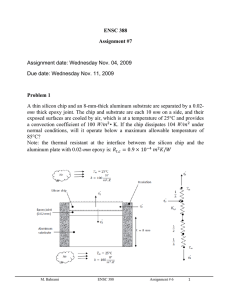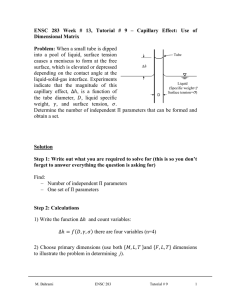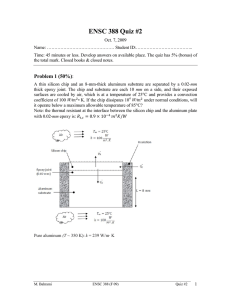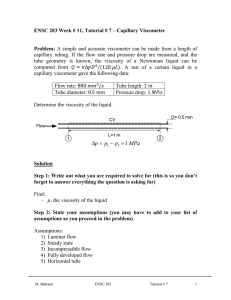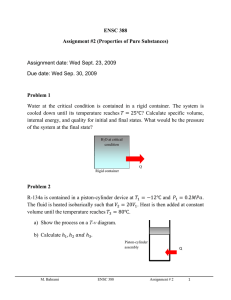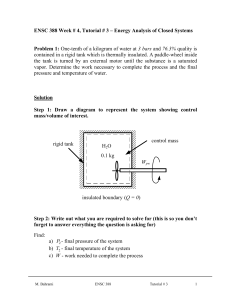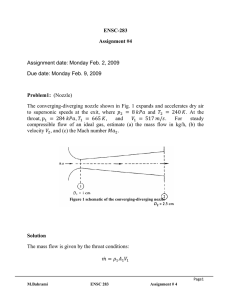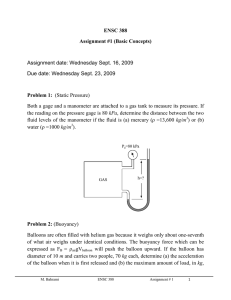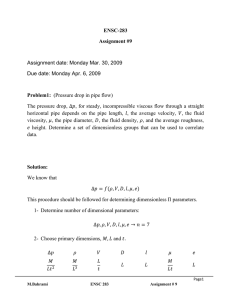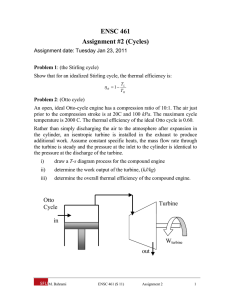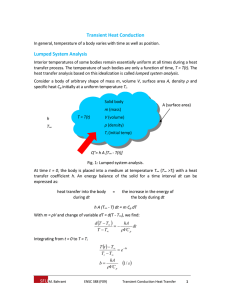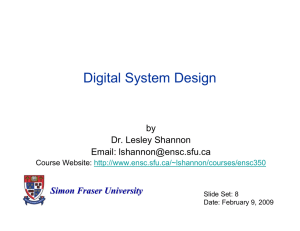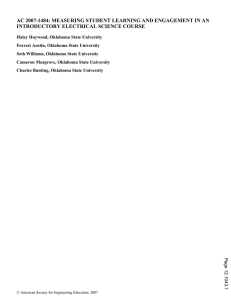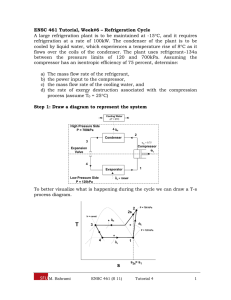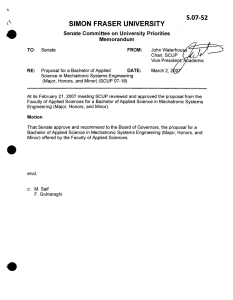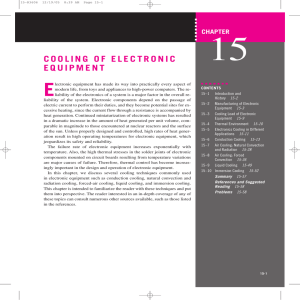ENSC 388 Assignment #7 Problem 1
advertisement
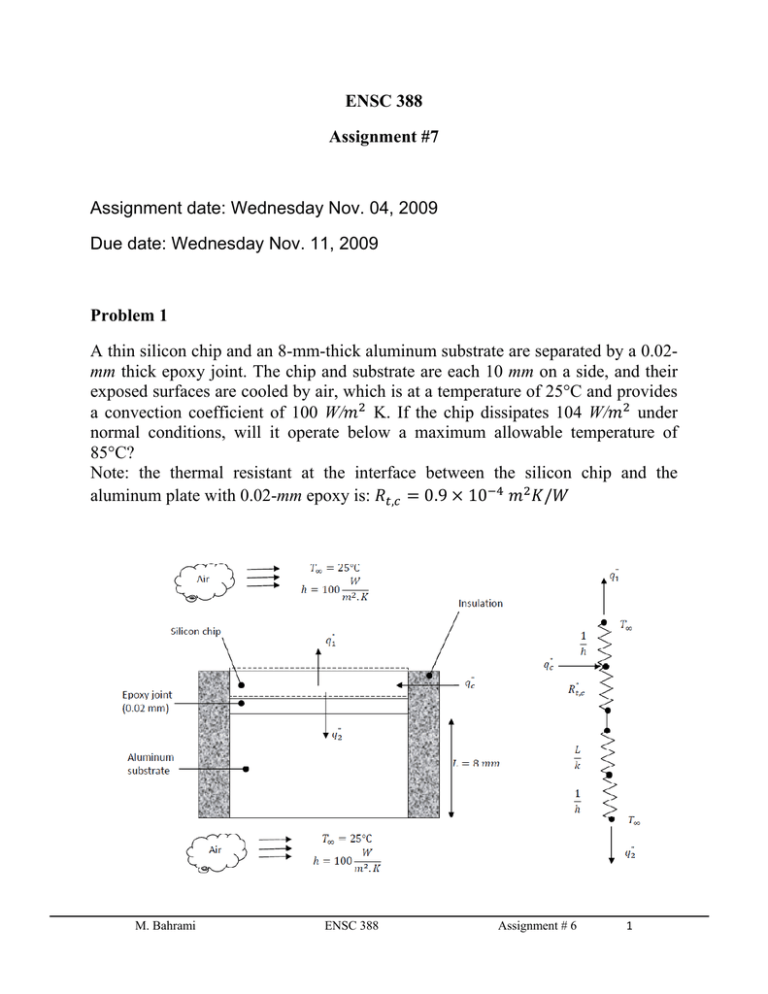
ENSC 388 Assignment #7 Assignment date: Wednesday Nov. 04, 2009 Due date: Wednesday Nov. 11, 2009 Problem 1 A thin silicon chip and an 8-mm-thick aluminum substrate are separated by a 0.02mm thick epoxy joint. The chip and substrate are each 10 mm on a side, and their exposed surfaces are cooled by air, which is at a temperature of 25°C and provides a convection coefficient of 100 W/ K. If the chip dissipates 104 W/ under normal conditions, will it operate below a maximum allowable temperature of 85°C? Note: the thermal resistant at the interface between the silicon chip and the aluminum plate with 0.02-mm epoxy is: , 0.9 10 / M. Bahrami ENSC 388 Assignment # 6 1 Problem 2 Consider a long solid tube, insulated at the outer radius and cooled at the inner radius r), with uniform heat generation (W/ ) within the solid. 1. Obtain the general solution for the temperature distribution in the tube. 2. In a practical application a limit would be placed on the maximum temperature that is permissible at the insulated surface (r = ). Specifying this limit as , identify appropriate boundary conditions that could be used to determine the arbitrary constants appearing in the general solution. Determine these constants and the corresponding form of the temperature distribution. 3. Determine the heat removal rate per unit length of tube. 4. If the coolant is available at a temperature , obtain an expression for the convection coefficient that would have to be maintained at the inner surface to allow for operation at prescribed values of , and . Note: conduction heat transfer with generation in cylindrical coordinate is: 1 1 dT r r dr dr q k 0 , , , , Coolant , M. Bahrami ENSC 388 Assignment # 6 2
